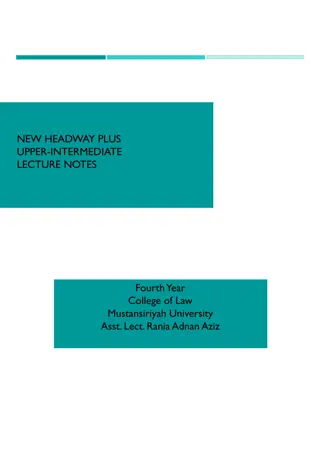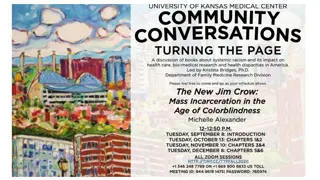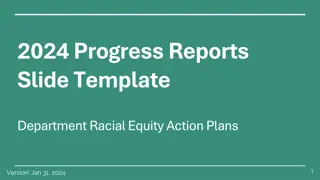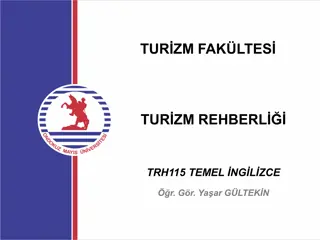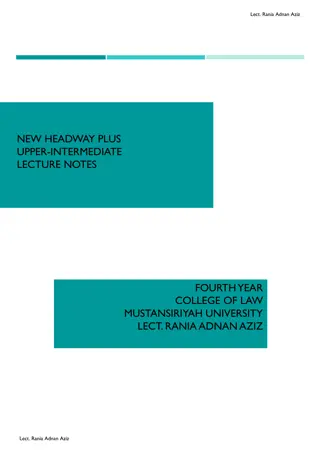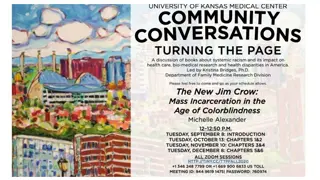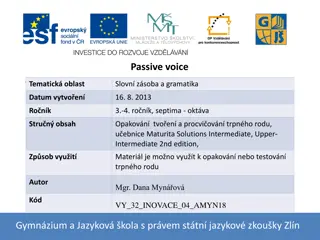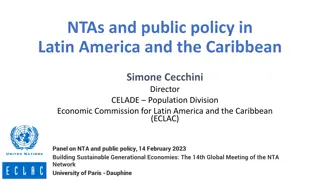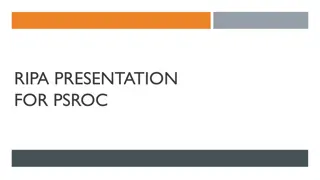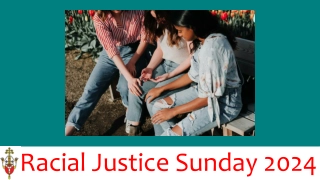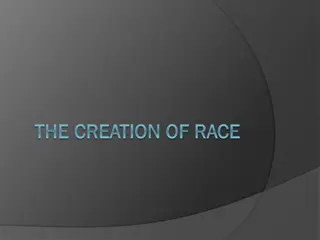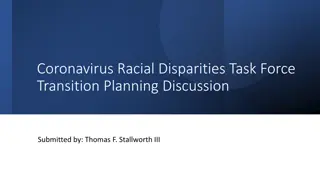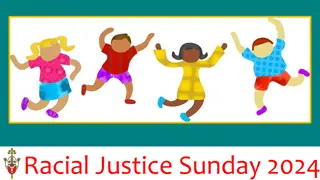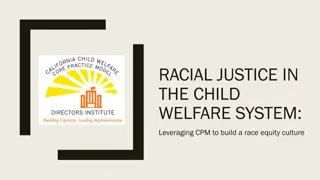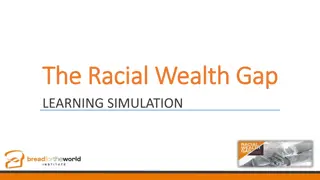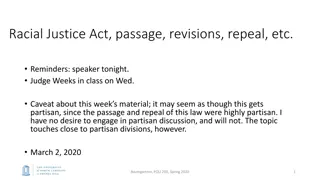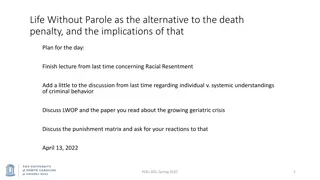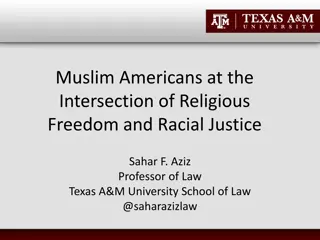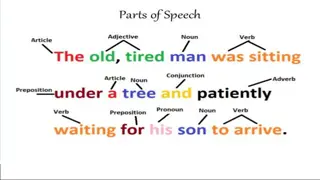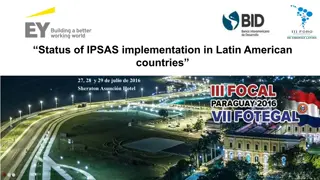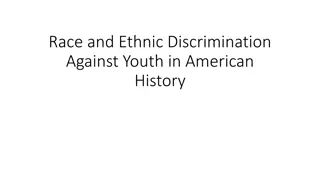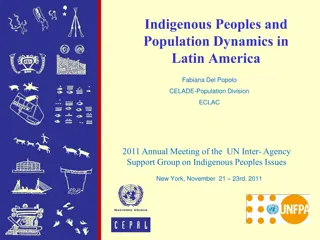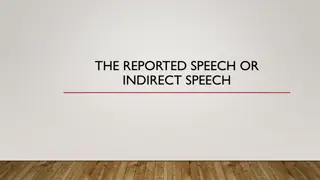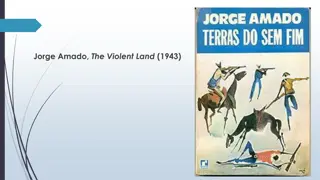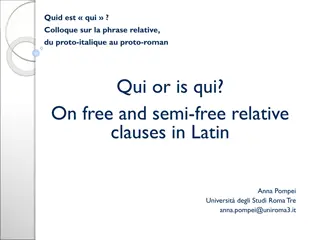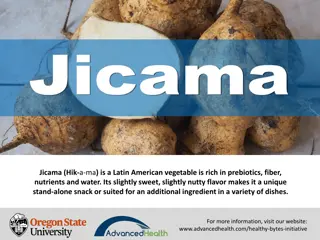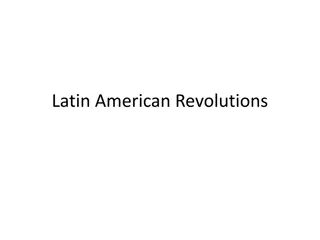Latin American Racial Dynamics: Past and Present Perspectives
The excerpts touch on the intersections of race, culture, and identity in Latin America, exploring the historical impact of the color line, African enslavement, and mestizaje. They delve into the complexities of racial fluidity, the role of nation-building in shaping identity, and the denial of racism through legal and societal constructs, offering insights into the region's richly diverse heritage.
Download Presentation

Please find below an Image/Link to download the presentation.
The content on the website is provided AS IS for your information and personal use only. It may not be sold, licensed, or shared on other websites without obtaining consent from the author. Download presentation by click this link. If you encounter any issues during the download, it is possible that the publisher has removed the file from their server.
E N D
Presentation Transcript
Edward Telles, Princeton University Eastern Sociological Society February 28, 2015 LATINOS, AFRO LATINOS AND THE (LATIN) AMERICAN COLOR LINE
DUBOIS (1903) COLOR LINE [famously] The problem of the twentieth century is the problem of the color-line [followed by:] - the relation of the darker to the lighter races of men in Asia and Africa, in America and the islands of the sea Note color (continuous) and the races (categorical) Note: global scope
NUMBER OF AFRICANS ENSLAVED AND DISEMBARKED, 1514-1866 BY REGION Brazil Brazil British Caribbean British Caribbean Spanish Americas Spanish Americas French Caribbean French Caribbean Dutch Dutch America America Mainland North America (U.S.) Mainland North America (U.S.) Other Other 4,864,000 4,864,000 2,318,000 2,318,000 1,293,000 1,293,000 1,120,000 1,120,000 445,000 445,000 389,000 389,000 274,000 274,000 TOTAL TOTAL 9,405,000 9,405,000 Source: Source: Eltis Eltis, Slave Voyages Database 2014 , Slave Voyages Database 2014
DATA From 2010 National Random Surveys by PERLA From 2010 National Random Surveys by PERLA Ten Countries (80% of Latin America) Ten Countries (80% of Latin America) Two Stages : Two Stages : 1. PERLA Surveys of Brazil, Colombia, Mexico and Peru in 1. PERLA Surveys of Brazil, Colombia, Mexico and Peru in 2. PERLA Ethnicity Module in 2010 America s Barometer in 2. PERLA Ethnicity Module in 2010 America s Barometer in Brazil, Bolivia, Dominican Republic, Guatemala, Brazil, Bolivia, Dominican Republic, Guatemala, Ecuador Ecuador Approximately 1000 Approximately 1000- -2500 cases for each country 2500 cases for each country
BACKGROUND: RACE MIXTURE (MESTIZAJE) IN LATIN AMERICA 1. In interest of unifying nations and distinguishing themselves 1. In interest of unifying nations and distinguishing themselves from racist countries, nation from racist countries, nation- -building elites made building elites made mestizaje mestizaje central to national identity central to national identity 2. M 2. Mestizo estizo (mixed race person) became prototypical national (mixed race person) became prototypical national 3. 3. Indigeneity Indigeneity and especially Blackness Cleansed or Denied and especially Blackness Cleansed or Denied 4. 4. Mestizaje Mestizaje and lack of race and lack of race- -based laws used to deny racism based laws used to deny racism 5. No legal racial segregation or exclusion (except in Caribbean 5. No legal racial segregation or exclusion (except in Caribbean and Panama) after Abolition and Panama) after Abolition 6. Racial Classification: customary and appearance 6. Racial Classification: customary and appearance- -based based (Not legal (Not legal- - or descent or descent- -based like the U.S.) based like the U.S.) 7. All of Above Lead to Racial Fluidity 7. All of Above Lead to Racial Fluidity
RESEARCH QUESTIONS How Useful Is Self-Identification in Ethnoracial Categories, the Standard Way of Collecting Race/Ethnicity Date, for Predicting Inequality? What if Use Actual Skin Color, which reflects perspective by others and fine grain distinctions? How is Ethnoracial Categorization Endogenous, Particular with Respect to Status?
MULTIPLE MEASURES/SYSTEMS OF RACE: CATEGORIES AND COLOR 1. Self 1. Self- -Identification by Identification by Ethnoracial Categories Categories 2. Interviewer 2. Interviewer- -Rated Skin Color Rated Skin Color Ethnoracial
SKIN COLOR Captures Latin American Conceptions of Race that are Captures Latin American Conceptions of Race that are Appearance Appearance- -Based and Continuous Based and Continuous Rarely Named or Recognized Rarely Named or Recognized Captures Fine Grain Distinctions, across and Captures Fine Grain Distinctions, across and within Census within Census Ethnoracial Ethnoracial Categories like Mestizo Categories like Mestizo Measured by Interviewer Using a Color Palette at Beginning of Measured by Interviewer Using a Color Palette at Beginning of Survey Survey
Ethnic identity and skin color, (1=Lightest, 11=Darkest) Bolivia Brazil 40 35 30 25 20 15 10 5 0 1 2 3 4 5 6 7 8 9 10 11 1 2 3 4 5 6 7 8 9 10 11 Indigenous Non-Indigenous White Indigenous Pardo Preto Colombia Dominican Republic 40 35 30 25 20 15 10 5 0 1 2 3 4 5 6 7 8 9 10 11 1 2 3 4 5 6 7 8 9 10 11 Indigenous Afro None Black
Ethnic identity and skin color, (1=Lightest, 11=Darkest) Ecuador Guatemala 45 40 35 30 25 20 15 10 5 0 1 2 3 4 5 6 7 8 9 10 11 1 2 3 4 5 6 7 8 9 10 11 White Mestizo Indigenous Afro Indigenous Non-Indigenous Peru Mexico 45 40 35 30 25 20 15 10 5 0 1 2 3 4 5 6 7 8 9 10 11 1 2 3 4 5 6 7 8 9 10 11 Indigenous Non-Indigenous White Mestizo Indigenous Black/Mulatto
YEARS OF SCHOOLING AND ETHNORACIAL IDENTIFICATION 12 Non-Indig 11 Non-Indig, non-Afro IndigAfro 10 Indig Non-indig 9 Non-indig Indig 8 7 6 Indig 5 4 Bolivia Guatemala Mexico Colombia Non-indigenous Indigenous Afro
YEARS OF SCHOOLING AND ETHNORACIAL IDENTIFICATION White Afro Mestizo 12 Mulato Indig 11 Mestizo White 10 Afro White Indig 9 Negro White Indio Pardo 8 Preto 7 6 5 4 Brazil DR Ecuador Peru
YEARS OF SCHOOLING AND SKIN COLOR 12 11 10 9 8 7 6 5 4 Light Medium Dark
HOW IS WHITE, BLACK AND MIXED RACE IDENTIFICATION RELATED TO SKIN COLOR?
CONCLUSIONS Skin Color Findings Reveal a Consistent Racial Hierarchy in Quite Distinct Countries Skin Color Findings Reveal a Consistent Racial Hierarchy in Quite Distinct Countries Ethnoracial Ethnoracial Identification Findings Less Robust and often not in Expected Direction Identification Findings Less Robust and often not in Expected Direction Indigenous People Disadvantaged Indigenous People Disadvantaged Perhaps Color, which is based on outward appearance and continuous distinctions, Perhaps Color, which is based on outward appearance and continuous distinctions, better captures black disadvantage and white advantage because it better better captures black disadvantage and white advantage because it better reflects racial discrimination, which is based on treatment (by others) reflects racial discrimination, which is based on treatment (by others) No Evidence of a Color Line No Evidence of a Color Line Little Evidence of Money Whitening; More on Money Darkening Effects of Status Respond to Particular Incentives and Interests National Dynamics (State Policies, National Narratives and Black Movements) Shape the Effects of Status on Racial Classification
SOURCES Telles, Edward and Telles, Edward and Tianna White or Mixed Race? How Skin Color, Status and Nation White or Mixed Race? How Skin Color, Status and Nation Shape Racial Classification in Latin America Shape Racial Classification in Latin America American Journal of Sociology. Journal of Sociology. 120(3 120(3) ) November Tianna Paschel Paschel. 2014. Who is Black, . 2014. Who is Black, American November Telles, Edward, Ren Flores and Fernando Urrea Giraldo. In Press, Pigmentocracies: Skin Color, Census Ethnoracial Categories and Educational Inequality in Eight Latin American Countries Research in Social Stratification and Mobility


